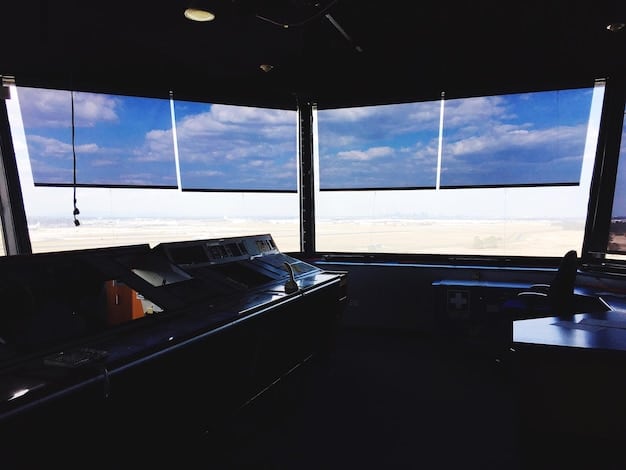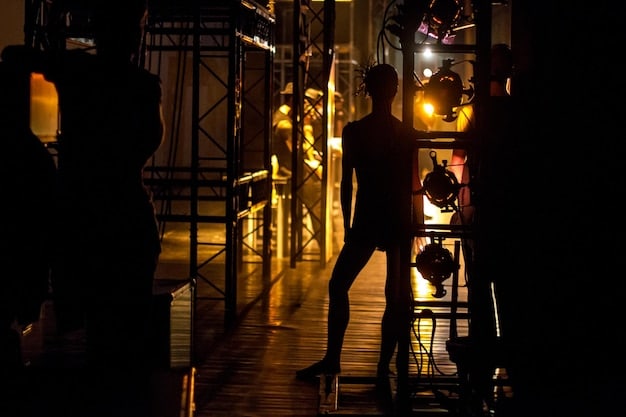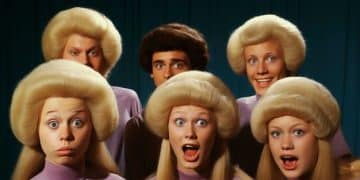Film Scores That Defined the 2010s: A Retrospective Review

Film scores of the 2010s showcased innovation and diversity, with composers blending genres and technology to create memorable soundtracks that enhanced cinematic storytelling and left a lasting impact on film music.
The 2010s were a transformative decade for film, and the scores that accompanied these films were no exception. The decade saw a departure from traditional orchestral scores, with **film scores that defined a decade** incorporating electronic music, experimental sounds, and diverse cultural influences. This retrospective review explores some of the most memorable and impactful film scores of the 2010s, examining how they elevated the cinematic experience.
The Rise of the Hybrid Score
The 2010s witnessed the rise of the hybrid score, a fusion of orchestral arrangements and electronic elements. This approach allowed composers to create richer, more dynamic soundscapes.
Blending Orchestral and Electronic Elements
Composers experimented with blending traditional orchestral sounds with synthesizers, electronic beats, and digital effects. This blending created unique sonic textures that enhanced the emotional impact of the films.
Hans Zimmer’s Influence
Hans Zimmer, a pioneer of the hybrid score, continued to be a major force in the 2010s, with scores like *Inception* setting a new standard for combining orchestral grandeur with electronic innovation.
- Inception (2010): Zimmer’s score for *Inception* is a masterclass in tension and suspense, using a combination of orchestral arrangements and electronic soundscapes to create a dreamlike atmosphere.
- Interstellar (2014): Zimmer’s work on *Interstellar* showcases his ability to evoke profound emotion through music, blending organ sounds with orchestral textures to create a score that is both epic and deeply personal.
- Dunkirk (2017): The score’s relentless tension is achieved through a combination of orchestral and electronic elements, mirroring the film’s immersive experience.
The hybrid score approach not only became a staple in blockbuster films but also influenced independent cinema, expanding the possibilities for film music.
The Influence of Indie Film Scores
Independent films in the 2010s featured innovative scores that often diverged from mainstream trends. These scores frequently incorporated unconventional instrumentation and experimental techniques.
Experimentation with Sound Design
Indie filmmakers and composers embraced experimentation, using sound design as an integral part of the score. This approach often blurred the lines between music and sound effects.
Disasterpeace and It Follows
David Disasterpeace’s score for It Follows took a different approach, utilizing a mostly electronic score that became iconic and legendary!

- It Follows (2014): Disasterpeace’s score for *It Follows* is a landmark in horror film music, using electronic textures to create a sense of dread and unease.
- Under the Skin (2013): Mica Levi’s score for *Under the Skin* is an avant-garde masterpiece, using dissonant strings and unsettling soundscapes to create a haunting and alien atmosphere.
- Mandy (2018): Jóhann Jóhannsson’s score creates a visceral, psychedelic atmosphere, making it a standout example of experimental film scoring.
These unconventional scores demonstrated the power of music to enhance the emotional and atmospheric qualities of independent films.
The Resurgence of the Traditional Orchestral Score
While hybrid and experimental scores gained prominence, the traditional orchestral score maintained its relevance. Composers continued to craft lush, emotional scores that evoked classic Hollywood.
Alexandre Desplat’s Elegant Compositions
Alexandre Desplat emerged as a leading voice in orchestral film music, known for his elegant compositions and melodic sensitivity.
Reviving Classic Hollywood Sound
Desplat and other composers revived the classic Hollywood sound, emphasizing melody, harmony, and emotional expression. His compositions balanced large-scale orchestrations with intimate moments, creating a rich tapestry of sound.

- The King’s Speech (2010): Desplat’s score for *The King’s Speech* is a poignant and intimate work, using delicate piano melodies and string arrangements to capture the emotional journey of the protagonist.
- The Grand Budapest Hotel (2014): Desplat’s whimsical and charming score for *The Grand Budapest Hotel* evokes the film’s quirky and nostalgic atmosphere.
- Little Women (2019): Desplat’s score captures the warmth and complexity of the story, blending traditional orchestral sounds with folk-inspired melodies.
The resurgence of the traditional orchestral score demonstrated the enduring appeal of classic Hollywood film music.
Diversity and Representation in Film Scores
The 2010s saw increased attention to diversity and representation in film music, with more opportunities for composers from underrepresented backgrounds.
Breaking Barriers
More female composers and composers of color began to break into the mainstream, challenging the historical dominance of white male composers. This shift brought fresh perspectives and diverse musical styles to film scoring.
Spotlighting Underrepresented Voices
Films like *Black Panther* and *Crazy Rich Asians* showcased the talents of composers from diverse cultural backgrounds, incorporating traditional instruments and musical styles into the score.
This increasing diversity enriched the landscape of film music, fostering greater inclusivity and creativity.
The Fusion of World Music Elements
The 2010s witnessed a growing interest in incorporating world music elements into film scores, creating unique and culturally rich soundscapes.
Incorporating Cultural Instruments and Styles
Composers drew inspiration from diverse musical traditions, incorporating instruments, melodies, and rhythms from around the world.
Ludwig Göransson’s Black Panther Score
Ludwig Göransson’s score for *Black Panther* blended traditional African instruments and vocal styles with modern orchestral and electronic elements.
- Black Panther (2018): Göransson’s score is a groundbreaking work that celebrates African culture and identity, blending traditional instruments and vocal styles with modern orchestral and electronic elements.
- Coco (2017): Michael Giacchino’s score brings the music of Mexico to life, enhancing the film’s vibrant and emotional storytelling.
- Theeb (2014): Ben Salisbury and Geoff Barrow’s score incorporates traditional Middle Eastern instruments to create an immersive and authentic soundscape.
The fusion of world music elements added depth and authenticity to film scores, enhancing the cultural resonance of the stories they accompanied.
The Use of Silence and Minimalism
In contrast to the epic and bombastic scores, some films embraced silence and minimalism to create tension and enhance emotional impact.
Creating Tension Through Absence
Composers used silence strategically, creating moments of anticipation and unease. This approach allowed the sound design and dialogue to take center stage, enhancing the realism and intimacy of the scenes.
Minimalist Composition Techniques
Composers like Jóhann Jóhannsson employed minimalist techniques, repeating simple musical phrases and motifs to create a hypnotic and emotionally resonant effect. The use of silence and minimalism demonstrated the power of restraint in film music, highlighting the beauty and tension that can be created through absence.
| Key Point | Brief Description |
|---|---|
| 🎵 Hybrid Scores | Orchestral & electronic elements combine. |
| 🎬 Indie Scores | Experimentation & unconventional sounds. |
| 🌍 World Music | Fusion of global musical traditions. |
| 🤫 Minimalism | Silence enhances tension & emotion. |
FAQ
▼
A hybrid film score blends orchestral elements with electronic music, creating a richer and more dynamic soundscape that enhances the emotional impact of the film.
▼
Indie films embraced experimentation with sound design, often blurring the lines between music and sound effects, leading to unique and unconventional scores.
▼
Composers incorporated instruments, melodies, and rhythms from diverse musical traditions, adding depth and authenticity to film scores and enhancing cultural resonance.
▼
Minimalism creates tension and enhances emotional impact. Strategic use of silence allows the sound design and dialogue to take center stage.
▼
Hans Zimmer, Alexandre Desplat, Ludwig Göransson, and Jóhann Jóhannsson, are known for their innovative contributions to film music.
Conclusion
The film scores of the 2010s represent a diverse and innovative era in cinematic music. From hybrid orchestral scores to experimental indie compositions, the decade saw composers pushing boundaries and exploring new sonic territories. The increasing diversity and incorporation of world music elements enriched the landscape, creating soundtracks that not only enhanced the films but also stood as artistic achievements in their own right.





